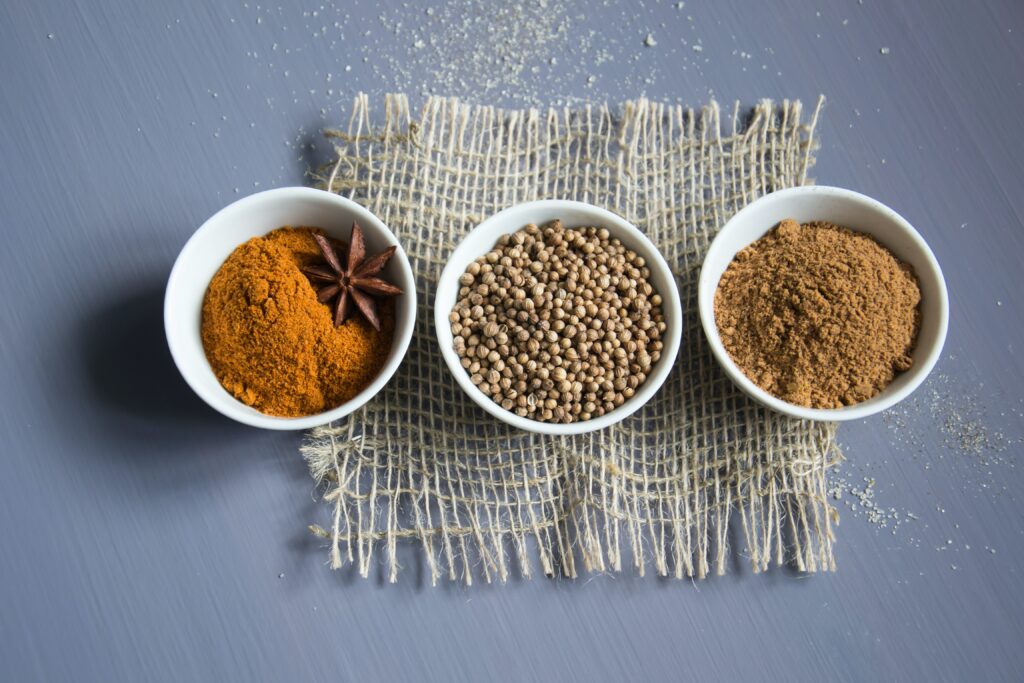I imagine most readers will see the title of this blog and wonder what in the world is Indian Saffron. Few people have heard of Saffron, one of the worlds most expensive spices. However, I am willing to say that nearly 100% of the readers of this blog have consumed Indian Saffron. Indian Saffron is a traditional name given to turmeric. Due to turmeric’s deep yellow-orange color, similar to that of saffron, it was traditionally called Indian saffron. Where might you have consumed turmeric before? Try mustard, cheese, butter, and curry for starters.

Turmeric is said to have a history that goes back over 5,000 years, with uses as a condiment, healing remedy, ceremonies (such as weddings), and commonly as a dye. Turmeric is a root of the curcuma longa plant and is a relative of ginger. Turmeric is a perennial plant that grows five to six feet tall and is native in the regions of tropical southern Asia. The majority of turmeric comes form India, however it is also grown in Indonesia, China, Philippines, Taiwan, Haiti, Pakistan, and Jamaica. The turmeric root is usually boiled and then dried and ground, and made into a powder; however it can be found as an extract, powder capsules, tablet, spice, and as tinctures. Turmeric’s yellow color comes mainly from pigments known as curcuminoids, with curcumin being the principal curcuminoid found in turmeric and is generally considered the most active component. For many years black pepper extract, or piperine, was used to help the body to better utilize the health benefits of turmeric and curcumin, which later liposomal forms of supplementation replaced black pepper, but current research now suggests combining turmeric with fenugreek seed is the best way to consume therapeutic turmeric. Turmeric root contains other nutrients in addition to its curcuminoids, such as manganese, iron, vitamin B6, potassium, essential oils, and fiber. Turmeric is often used in both Ayurvedic and Chinese medicine as an anti-inflammatory, antioxidant, to treat digestive problems, to treat liver problems, skin diseases, and wounds.
Research suggests that turmeric may have some benefit for people with: indigestion, ulcerative colitis, osteoarthritis, heart disease, cancer (prostate, breast, skin, lung, melanoma, and colon), anti cancer properties, inflammatory bowel disease such as Crohn’s and ulcerative colitis, Rheumatoid Arthritis, Cystic Fibrosis, improved liver function, cardiovascular protection, lowering cholesterol, help break down fats/digest, lowers insulin resistance, repair liver tissue, psoriasis, cataracts, tendonitis, anti viral, anti bacterial, anti fungal, pain, dementia, Alzheimer’s, allergies, and more.
In my opinion one of the more interesting areas of turmeric research is looking at Alzheimer’s and dementia patients. Only 4% of Indians over the age of 80 develop Alzheimer’s disease compared to 16% of the same aged Americans; and researchers are thinking turmeric plays a major role. It should also be mentioned that child leukemia is also much lower in these Asian countries and researchers are looking to see if turmeric plays a role in this as well. Risk factors for leukemia are both lifestyle and environmental factors like exposure to radiation, benzene, pollutants, chemotherapeutic drugs, and researchers think turmeric may be protective against exposure to these substances.
Reported side effects for turmeric and curcumin include: nausea, diarrhea, not recommended in people with biliary obstruction, pregnant or lactating, may be contraindicated with blood thinners, and may lower blood sugar levels.
Understand that currently much of the research on turmeric is on animals and in test tubes, and not a lot of human studies have been done at this time; so more research is needed. When considering using turmeric for its health benefits please consult with your health care professional prior to using it. As always when purchasing food look for quality organic products. One lab tested off the shelf Curcumin and turmeric supplements and found that 20% failed their quality review.
Getting the spice turmeric in your diet can be fun and flavorful. Here are some suggestions for using turmeric in your home cooking: on sautéed apples or onions, in dips, soups, on meat, in egg salad, in rice, in salad dressings, in water, tea, or smoothie, also fresh turmeric leaves can be used to wrap and then cook food in. My personal favorite is adding turmeric to soups, giving them a deep richer flavor.
